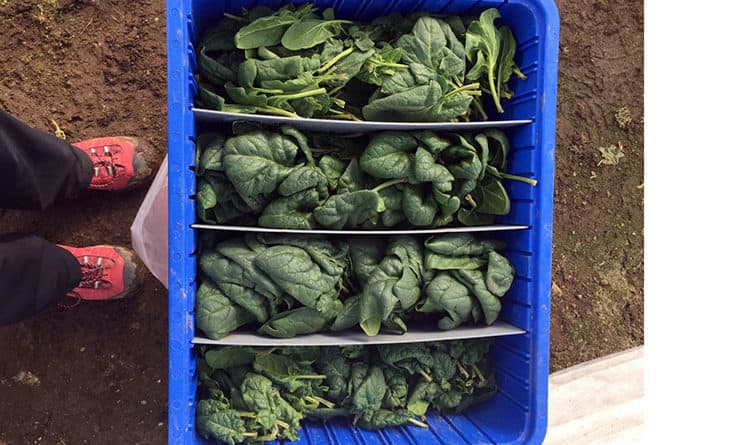Editor’s Note: The University of New Hampshire Cooperative Extension provides weekly gardening columns in which Jeremy DeLisle answers questions from local gardeners.
This season has been one of challenges and small successes for those of us who tend a garden. As the season slowly winds down, let’s consider some of the ways that we can increase the sustainability of our practices and build resiliency into our gardening systems.
Soil health
Success in the garden begins and ends with soil health. Caring for and understanding the biology our soils should be one of the primary focuses of the sustainable gardener. Soils are complex, living, breathing systems that function as continuous environmental filters when properly cared for. Plants, animals, insects, fungi, and bacteria all call soil home. Each plays a crucial role in the health of productive soils.
The USDA Natural Resource Conservation Service (NRCS) explains that all food webs are fueled by the primary producers: the plants, lichens, moss, photosynthetic bacteria, and algae that use the sun’s energy to fix carbon dioxide from the atmosphere.
As organisms decompose complex materials or consume other organisms, nutrients are converted from one form to another and are made available to plants and to other soil organisms. All plants including grasses, trees, shrubs, and agricultural crops depend on the soil food web for their nutrition.
Regular additions of organic matter such as compost, plant residues, manures, and mulches are critical to providing garden soils with the fuel needed to function properly and the ability to retain more moisture when water is in limited supply.
Distilled to its simplest ingredients, nurturing healthy soils leads naturally to a plant-positive approach to gardening. Healthy soils nurture healthy plants, which in turn nurture healthy gardeners.
Tillage practices
Minimizing tillage in our gardens is an important step to encouraging healthy soils. Tillage induces spikes in bacterial and fungal decomposition of organic matter, accelerating carbon dioxide release into the atmosphere. Additionally, as most soil life resides in the top few inches of soil, minimizing tillage will prevent disturbances to these organisms and their essential functions.
To learn more about life in the soil, visit the NRCS website.
Water harvesting and conservation
Rainwater harvesting, drip irrigation, wicking systems, mulching, straw bale gardening, and permaculture-style hugelkultur beds are a few example of garden system components that forward-thinking gardeners are implementing.
In true permaculture fashion, think about your gardens as a system, break out components into manageable sections, look for connections between various components, and figure out ways to turn what might otherwise become waste into something useful. This process will allow you to maximize efficiency and productivity.
For example, use water collected in a rain barrel to fill milk jugs that have been converted into water reservoirs for a wicking watering system. Rainwater is collected and stored for use and the milk jugs get a second life while freeing up time, which might otherwise be spent hand watering.
Hugelkultur is a method of raised-bed gardening that utilizes spongy or partially rotten firewood, brush, old flower stalks, and the like for the foundation layer of a new raised or mounded bed system. After layering these materials several inches thick, garden soil, vegetable scraps, inverted sod (green side down), or compost are piled on top to fill in spaces between the wood scraps and build a mound of soil.
Once this is completed, a mulch of straw or other suitable material is applied to prevent weed growth and retain moisture. As the brush layer decomposes, it acts as a sponge to retain moisture and support soil life. Such beds are best prepared several months prior to planting to allow decomposition of ingredients and ensure nutrient availability.
Season extension and microclimate modification
When possible, take advantage of early and late season growing periods, particularly for vegetable crops. During these time periods, we typically see higher soil moisture levels, so supplemental irrigation needs are reduced.
Floating row covers, also called frost blankets, can provide a few degrees of protection and allow cool season veggies like salad greens to be grown earlier and later. Low tunnels, high tunnels, caterpillar tunnels, and cold frames are all variations on low-tech systems designed to create a microclimate warmer than the unprotected outdoor environment. In these systems, daytime temperatures can easily be 20 or 30 degrees warmer than outside temperatures. Researchers at the N.H. Agricultural Experiment Station recently used high tunnels to successfully grow spinach in the winter.
Gardens as learning laboratories
We all have little tricks and techniques that work for us in the garden. Experimenting with new methods, making mistakes and learning from them, and educating ourselves and our gardening friends about new discoveries are all the very best parts of tending a garden in your little corner of the world.
Challenge yourself to identify a plant, insect, or disease in the garden that you haven’t quite figured out yet. Learn about the biology of the organism and search for the connections to other components of the garden system. I guarantee that once you do, you’ll look at your garden with a renewed sense of fascination and curiosity that will lead to stronger, more resilient system and bountiful production for years to come.
Jeremy DeLisle is the program coordinator for the UNH Cooperative Extension Education Center. The center answers questions about gardening and more at answers@unh.edu, or by calling 877-398-4769 Monday through Friday, between 9 a.m. and 2 p.m.

